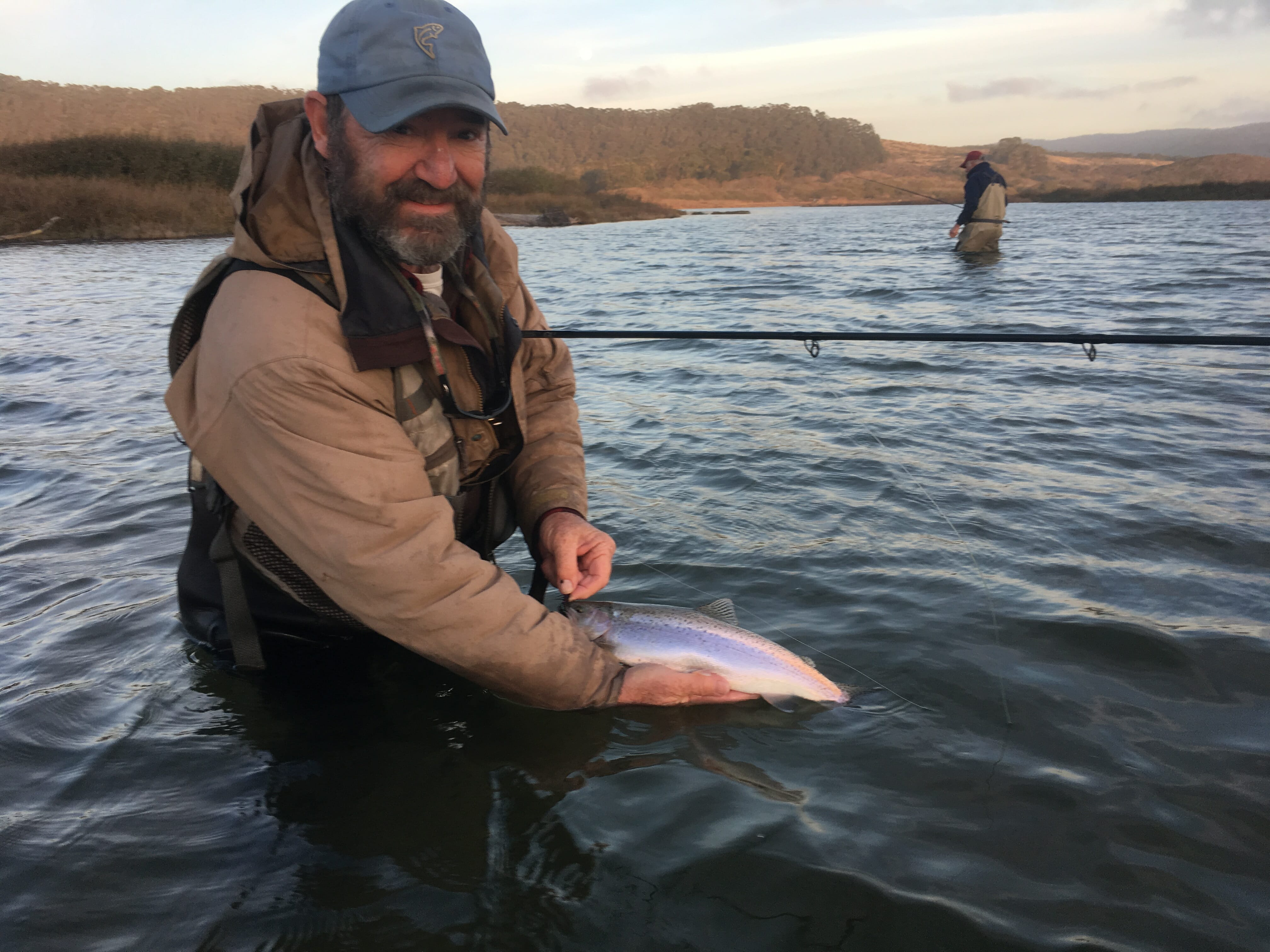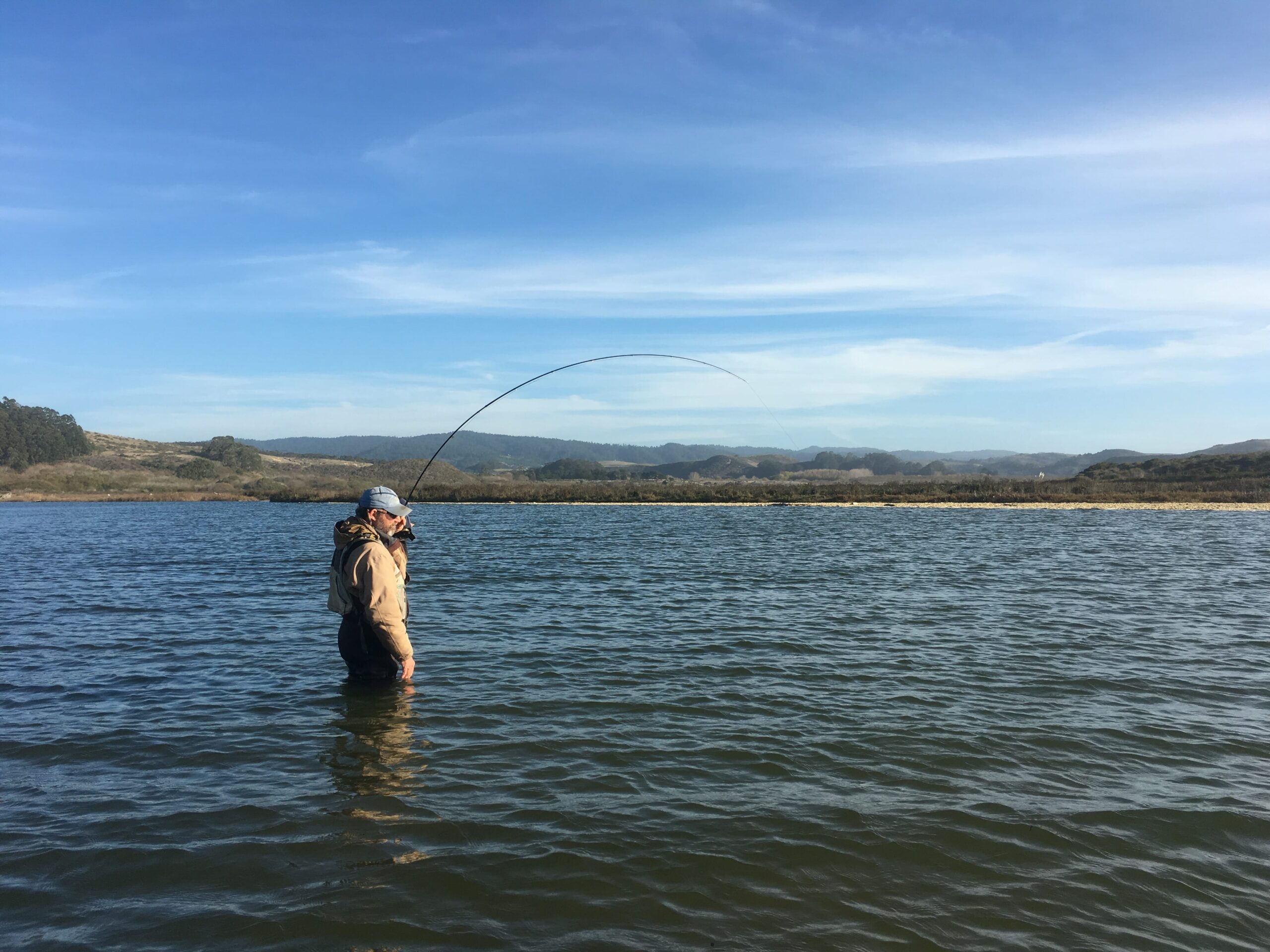The Steelhead Whisperer, on his home water, in his characteristic pose.
By Sam Davidson
Apparently I like to observe important fishing occasions by making other anglers feel better about themselves.
2017 was a case in point. I ended the calendar year, and the 2016-17 winter steelhead season (in March), in the same fashion: by going out to one of my local waters and getting no love from sea-run O. mykiss.
Fishing for steelhead is always iffy, especially in the drought-strangled streams along California’s central coast. So I felt okay, sort of, about casting all day with nary a grab. Indeed, I consoled myself by imagining that my spanking could be considered a form of altruism, as my brother and the few others with whom I shared the water on those days were visibly heartened by the fact that they were more stoic about their lack of success than I was.
At the conclusion of my most recent exercise in futility, on December 31, I took stock and decided I wasn’t that disappointed. My philanthropic contributions to my fellows notwithstanding, however, I had this nagging feeling that maybe I should be. There had been fish around me. They taunted me by breaching every now and again. But those zeroes remained on the scoreboard.

That nagging feeling was bolstered by the fact that the Steelhead Whisperer did manage to land a few juvenile and sub-adult steelhead. However, he operates on another plane from us mere mortals and some time ago I stopped comparing my results to his.
Still. As the shadows lengthened and after I tugged off my waders for the final time in 2017, I marked another entry on my Steelhead Card, which was official proof that at least I had been out there. And as I left blank the boxes in which you record how many wild and hatchery steelhead you landed that day, I got to thinking about whether you could claim that you had been successful, or were satisfied with, a day of fishing in which no fish were landed, the line never came tight (except on snags), and, as best you could tell, no fish were even tempted to take your offerings, slowly stripped through one of the most productive wild steelhead fisheries left in this part of the world.
Recently a friend with whom I sometimes chase perch or stripers on an empty swath of beach posted a photo on social media of a glorious sunset, which he was enjoying at the end of a session in the suds. His comment below the photo was, “Sometimes it’s not about the catching.”
To which the Steelhead Whisperer, one of the true sages of this era of fly fishing, responded, “Yeah, but it’s mostly about the catching.”
The Whisperer was being tongue-in-cheek. Mostly. For anyone who consider him- or herself a fairly serious angler—heck, even for the most rank rookie—the grab is the affirmation. If we never caught anything fishing would eventually lose its appeal. The tug is the drug.

Nonetheless the final day of 2017 did not leave me wanting. We were fishing water that remains productive for steelhead thanks in part to years of work by the Steelhead Whisperer and others to improve dry season streamflows, fish passage, and water quality in the estuary. In a place normally strafed by onshore winds, kites and red-tailed hawks hovered and wheeled in fitful breezes. Recent large swells had closed the sandbar at the river’s mouth, so there was little interference from kelp and other ocean detritus. Fly and gear anglers shared the water amicably. I got to examine the Steelhead Whisperer’s secret weapons—he took mercy on me after a while and gave me a couple of his time-tested flies for that spot, which I promptly broke off on snags no one else seemed to find.
As I drove back south on Highway 1, one of the most scenic drives anywhere, I tried hard not to feel good. The competitive me sneered, What glory is there in getting skunked? The me that cares more about opportunity than results murmured, Only the glory of wading waist-deep into an historic wild steelhead fishery on a beautiful day with good fellowship on the banks and fish in front of you, even if they aren’t grabby.
Maybe it isn’t all about the catching. But maybe my standards are just low. If that is the case, I resolve to raise them in 2018. Maybe.
Sam Davidson is TU’s communications director for California and Oregon. He lives and works from the banks of his home steelhead water, the Carmel River.



